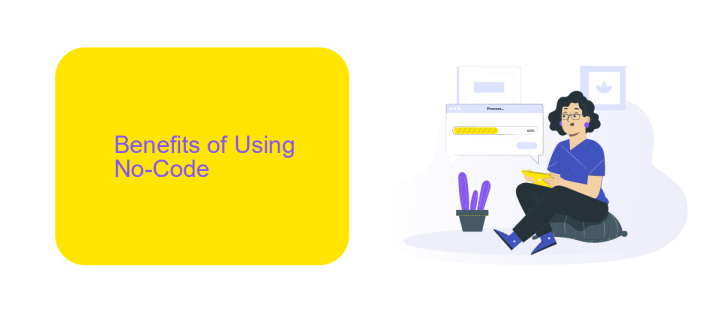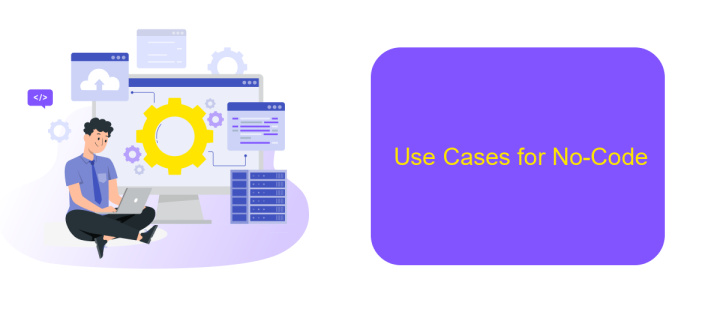No-Code
The no-code movement is revolutionizing the way we approach software development, enabling individuals without traditional programming skills to create powerful applications. By leveraging intuitive drag-and-drop interfaces and pre-built templates, no-code platforms democratize technology, empowering entrepreneurs, small businesses, and even hobbyists to innovate and solve problems efficiently. This article explores the benefits, challenges, and future prospects of the no-code revolution.
What is No-Code?
No-Code is a revolutionary approach to software development that allows users to create applications without writing any code. This method leverages intuitive drag-and-drop interfaces and pre-built templates, making it accessible to individuals without technical backgrounds.
- Ease of Use: No-Code platforms are designed for simplicity, enabling anyone to build applications quickly.
- Cost-Effective: Reduces the need for expensive development teams and resources.
- Speed: Accelerates the development process, allowing for rapid prototyping and deployment.
- Flexibility: Offers a wide range of functionalities, from simple websites to complex business solutions.
One of the key advantages of No-Code is its ability to integrate various services seamlessly. For instance, ApiX-Drive is a powerful tool that helps users connect different applications without coding. This service simplifies the process of setting up integrations, ensuring that data flows smoothly between systems. Overall, No-Code empowers users to bring their ideas to life with minimal effort and maximum efficiency.
Benefits of Using No-Code

No-code platforms offer numerous benefits, making them an attractive option for businesses and individuals alike. One of the primary advantages is the significant reduction in development time. By eliminating the need for traditional coding, users can create and deploy applications much faster, allowing for quicker iteration and innovation. This acceleration in development also translates to cost savings, as there is less need for specialized programming skills and resources.
Another key benefit is the accessibility it provides to non-technical users. No-code platforms empower individuals without a coding background to build and manage their own applications, fostering greater creativity and autonomy. Additionally, these platforms often come with pre-built templates and drag-and-drop interfaces, simplifying the process even further. For instance, integrating various services and automating workflows becomes seamless with tools like ApiX-Drive, which allows users to connect different applications without writing a single line of code. This ease of integration enhances productivity and ensures that businesses can adapt quickly to changing needs.
Types of No-Code Platforms

No-code platforms have revolutionized the way individuals and businesses approach software development, offering a variety of tools to meet diverse needs. These platforms empower users to create applications without writing a single line of code, making technology more accessible to everyone.
- Website Builders: Tools like Wix and Squarespace allow users to design and publish websites with drag-and-drop features.
- App Builders: Platforms such as Adalo and Glide enable the creation of mobile and web applications without coding knowledge.
- Automation Tools: Services like ApiX-Drive facilitate seamless integration between different software applications, automating workflows and data transfers.
- Database Management: Airtable and Notion provide robust solutions for managing data and creating custom databases.
- eCommerce Solutions: Shopify and BigCommerce help users set up and manage online stores effortlessly.
These no-code platforms cater to a wide range of requirements, from simple website creation to complex app development and workflow automation. By leveraging tools like ApiX-Drive, users can easily integrate various services, enhancing functionality and efficiency without the need for extensive technical skills.
Use Cases for No-Code

No-Code platforms are revolutionizing the way businesses operate by enabling users to create applications without any programming knowledge. This democratization of technology allows for faster and more cost-effective solutions to be implemented across various industries.
One of the primary use cases for No-Code is in the development of internal tools. Businesses can quickly build custom dashboards, project management tools, and reporting systems tailored to their specific needs. This enhances productivity and allows teams to focus on more strategic tasks.
- Automating repetitive tasks and workflows
- Creating custom CRM systems
- Developing e-commerce websites
- Building mobile apps for customer engagement
- Integrating various services and APIs
For instance, services like ApiX-Drive allow businesses to easily set up integrations between different applications, automating data transfer and reducing manual work. This enhances efficiency and ensures that all systems work seamlessly together, providing a cohesive operational flow.
Future of No-Code
The future of No-Code is poised to revolutionize the way businesses and individuals approach software development. As technology continues to advance, No-Code platforms are becoming more sophisticated, enabling users to create complex applications without writing a single line of code. This democratization of software development opens up opportunities for non-technical users to bring their ideas to life, fostering innovation and speeding up the development process.
Integration capabilities will play a crucial role in the evolution of No-Code platforms. Services like ApiX-Drive are at the forefront, providing seamless integration solutions that allow different applications to communicate effortlessly. By automating workflows and connecting various tools, ApiX-Drive helps users streamline their processes, making it easier to manage and scale their operations. As No-Code technology continues to evolve, we can expect even more powerful and user-friendly tools that will further empower individuals and businesses to achieve their goals with minimal technical barriers.
FAQ
What is No-Code?
Who can benefit from No-Code platforms?
Can No-Code platforms handle complex tasks?
What are some common use cases for No-Code tools?
How can I integrate different apps and services using No-Code tools?
Apix-Drive is a universal tool that will quickly streamline any workflow, freeing you from routine and possible financial losses. Try ApiX-Drive in action and see how useful it is for you personally. In the meantime, when you are setting up connections between systems, think about where you are investing your free time, because now you will have much more of it.

